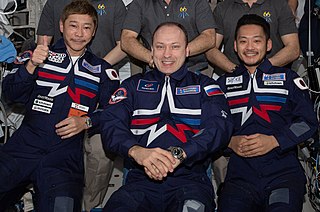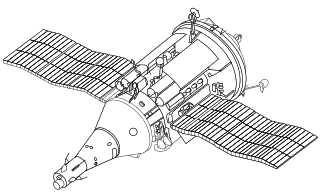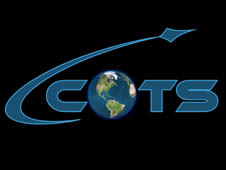Related Research Articles

Space tourism is human space travel for recreational purposes. There are several different types of space tourism, including orbital, suborbital and lunar space tourism. Tourists are motivated by the possibility of viewing Earth from space, feeling weightlessness, experiencing extremely high speed and something unusual, and contributing to science.
Human spaceflight programs have been conducted, started, or planned by multiple countries and companies. Until the 21st century, human spaceflight programs were sponsored exclusively by governments, through either the military or civilian space agencies. With the launch of the privately funded SpaceShipOne in 2004, a new category of human spaceflight programs – commercial human spaceflight – arrived. By the end of 2022, three countries and one private company (SpaceX) had successfully launched humans to Earth orbit, and two private companies had launched humans on a suborbital trajectory.

The Ansari X Prize was a space competition in which the X Prize Foundation offered a US$10,000,000 prize for the first non-government organization to launch a reusable crewed spacecraft into space twice within two weeks. It was modeled after early 20th-century aviation prizes, and aimed to spur development of low-cost spaceflight.

The Almaz program was a highly secret Soviet military space station program, begun in the early 1960s.

Vladimir Georgiyevich Titov is a retired Russian Air Force Colonel and former cosmonaut. He has participated in four spaceflight missions. The catastrophic explosion of a Soyuz rocket in 1983 led to him being one of only four people to use a launch escape system. He is married to Alexandra Kozlova, they have two children.

Private spaceflight refers to spaceflight activities undertaken by non-governmental entities, such as corporations, individuals, or non-profit organizations. This contrasts with public spaceflight, which is traditionally conducted by government agencies like NASA, ESA, or JAXA.

The TKS spacecraft was a Soviet spacecraft conceived in the late 1960s for resupply flights to the military Almaz space station.

Peter H. Diamandis is an American marketer, engineer, physician, and entrepreneur. He is best known as the founder and chairman of the X Prize Foundation, and the cofounder and executive chairman of Singularity University. He is also cofounder and former CEO of the Zero Gravity Corporation, cofounder and vice chairman of Space Adventures Ltd., founder and chairman of the Rocket Racing League, cofounder of the International Space University, cofounder of Planetary Resources, cofounder of Celularity, founder of Students for the Exploration and Development of Space, vice chairman and cofounder of Human Longevity, Inc.

The Vozvraschaemyi Apparat, or VA spacecraft, was a Soviet crew capsule, intended to serve as a crewed launch and reentry vehicle. Initially designed for the LK-1 human lunar flyby spacecraft for one of the Soviet crewed lunar programs, then the LK-700 redesign, it was later repurposed for the Almaz military space station program.
Astrotech Corporation, formerly Spacehab Inc., is a technology incubator headquartered in Austin, Texas. Astrotech uses technology sourced internally and from research institutions, government laboratories, and universities to fund, manage and sell start-up companies.

Commercial Orbital Transportation Services (COTS) was a NASA program to coordinate the development of vehicles for the delivery of crew and cargo to the International Space Station by private companies. The program was announced on 18 January 2006 and successfully flew all cargo demonstration flights by September 2013, when the program ended.
The Heinlein Prize for Advances in Space Commercialization, generally known as the Heinlein Prize, was founded in 1988 to reward individuals who make practical contributions to the commercialization of space. The Heinlein Prize offers a cash award of $500,000 to one or more individuals for practical accomplishments in the field of commercial space activities awarded by the Heinlein Prize Trust.

The X Prize Cup is a two-day air and space exposition which was the result of a partnership between the X Prize Foundation and the State of New Mexico that began in 2004 when the Ansari X-Prize was held. This led to plans to build the world's first true rocket festival. Three X-Prize Cups have been held: in 2005, 2006 and 2007. Each X Prize Cup hosts different events and demonstrations, such as rocket-powered bicycles, rocket jet packs; but particularly notable are the Lunar Lander Challenge and the Space Elevator Games. 85,000 visitors attended the 2007 X Prize Cup. Although there was no X Prize Cup in 2009, there was a Lunar Lander Challenge.

Spaceflight began in the 20th century following theoretical and practical breakthroughs by Konstantin Tsiolkovsky, Robert H. Goddard, and Hermann Oberth, each of whom published works proposing rockets as the means for spaceflight. The first successful large-scale rocket programs were initiated in Nazi Germany by Wernher von Braun. The Soviet Union took the lead in the post-war Space Race, launching the first satellite, the first animal, the first human and the first woman into orbit. The United States would then land the first men on the Moon in 1969. Through the late 20th century, France, the United Kingdom, Japan, and China were also working on projects to reach space.
Excalibur Almaz was a private spaceflight company which planned to provide a variety of deep space crewed exploration missions, micro-gravity science, and payload delivery. EA also aimed to offer Low Earth Orbit cargo and crew delivery and return.

Robert A. Citron, often called Bob Citron was an American entrepreneur and aerospace engineer who was born in Brooklyn, New York, and educated at the University of the Philippines and aeronautical engineering from Northrop University (1953–1959). Citron helped establish and manage the Smithsonian Astrophysical Observatory's Operation Moonwatch and Precision Optical Satellite Tracking Programs (STP) after the launch of Sputnik I in 1957. He founded or co-founded five companies dealing with documentary film production, publishing, space research and space logistics support, reusable satellite launch systems, and Lunar transportation and logistics. Citron also started three nonprofit foundations dealing with scientific field research. He died on January 31, 2012, at his home in Bellevue, Washington, at the age of 79, due to complications from prostate cancer.
Jerome Pearson was an American engineer and space scientist best known for his work on space elevators, including a lunar space elevator. He was president of STAR, Inc., and has developed aircraft and spacecraft technology for the United States Air Force, DARPA, and NASA. He held several patents and was the author of nearly 100 publications in aircraft, spacecraft, electrodynamic tethers, SETI, and global climate control.
Len Cormier worked for many years in the U.S. aerospace industry, in government, large industry, and as a private entrepreneur. He developed many creative proposals for reusable launch vehicles, and was present at several key events of the early Space Age.

Lunar tourism may be possible in the future if trips to the Moon are made available to a private audience. Some space tourism startup companies are planning to offer tourism on or around the Moon, and estimate this to be possible sometime between 2023 and 2043.
References
- ↑ Foust, Jeff (2007-04-30). "Opening wallets, closing windows". The Space Review.
- ↑ Vrazo, Fawn (1988-05-16). "In the U.S. space capital, he's boosting Soviet rockets". The Philadelphia Inquirer.
- ↑ Broad, William J. (1987-12-01). "Americans See Rocket In Soviet". The New York Times.
- ↑ Skoler, Michael (1991-09-10). "Soviet Space Program Seeks Alternate Funds". NPR Morning Edition.
- ↑ Carreau, Mark (2006-05-25). "Leader in space tourism wins prize". Houston Chronicle.
- ↑ Baxter, Amy (2006-07-07). "The Heinlein Prize for Advances in Space Commercialization Awarded to Dr. Peter H. Diamandis". The Heinlein Prize. Archived from the original on 2008-05-12. Retrieved 2007-05-16.
- 1 2 Investor Claims Houston "Space Law" Expert's Private Space Flight Company Was a Scam, Houston Press, 13 November 2014, retrieved 2 January 2016.